I was reminded a few weeks ago that it has been 136 years since the sinking of the Princess Alice at Gallions Reach, a stretch of the Thames between Woolwich and Barking Creek, on 03 September 1878
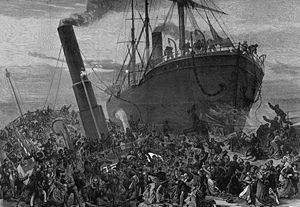
http://en.wikipedia.org/wiki/SS_Princess_Alice_(1865)
The SS Princess Alice was a passenger paddle steamer. She was sunk in a collision on the River Thames with the collier Bywell Castle off Tripcock Point in 1878 with the loss of over 650 lives, the greatest loss of life in any Thames shipping disaster. Two of these lives were my 3rd Great Grandmother, Emma FRITH (nee SLATER), and her daughter 21 year old Rose FRITH.
Emma SLATER was listed in the Census documents as having been born in Berkshire. She was born before Registration in England (1837), which means there will not be a birth certificate for her. To find details of her birth I have been searching using Parish Registers to find her baptism. Various genealogy sites have parish registers, but I found Emma on familysearch.org (a great source for parish registers). https://familysearch.org


It is interesting to note, that in the parish registers (and I’ve only seen the transcriptions) Emma is listed with the last name of SLATTER (two T’s), whereas in later documents her family name is SLATER (one T). Changes in spelling of names is a common occurrence in family research – in fact looking through the birth certificates of Emma’s children, some have her maiden name as Slater and some as Slatter. It’s worth understanding the level of literacy in the 1800’s was not that of today. Names were often written as they were said, this leads to many modern idioms of old surnames. Slater is the accepted modern idiom of the older “Slatter”. (reference:http://www.surnamedb.com/Surname/Slatter).
Emma was baptised in the Parish of St Laurence, Reading, Berkshire on the 11th April 1819. Her parents were John SLATTER and Ruth BROWN. In the 1841 Census Emma was married to William FRITH, both of them were 20 years old and living in Bunhill Row, Finsbury, London. I don’t know why the came to London from Reading, but William was a bootmaker (later listed as a Bootmaker “master”) and there was probably a chance of more work in London. William and Emma married in Reading on the 26 February 1837. Again, this was before registration, so no marriage certificate exists, but they can be found in the Parish Registers. Emma & William were married in St Laurence Church Reading, the same parish in which Emma was baptised.

According to family history William & Emma had 13 children, so far only 10 have been found in the records. All of them were born between 1838 and 1863, and living with William and Emma in the censuses of 1841, 1851 and 1861. By 1871 William, Emma & family were living in Wenlock Terrace, in Shoreditch, the historic East End of London. http://en.wikipedia.org/wiki/East_End_of_London
Wenlock Terrace doesn’t exist any more and that part of London has changed considerably since the Victorian era. The Wenlock Basin area is recognisable in old maps of London and the 1871 census includes instructions on where the enumerator had to walk. Wenlock Terrace was in amongst Shepherdess Walk, Wenlock road, Windsor Street and Cross Street. These streets can be clearly seen on an 1863 map of the area.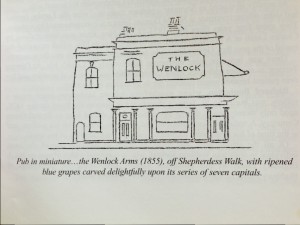
Still surviving today is the Wenlock Arms public house (1855)
According to the census returns, and the addresses recorded on the birth certificates of their children, Emma & William lived in various places around the Shoreditch vicinity. Around the 1870’s Shoreditch was populated with furniture & textile traders, but sadly the area declined along with the industries and by the end of the 19th century Shoreditch had become a byword for crime, prostitution and poverty.
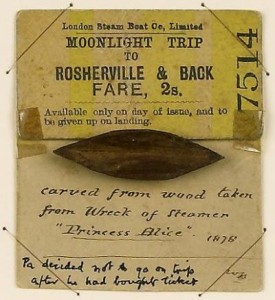
© National Maritime Museum, London
However in September 1878 William must have been earning a good living as he was able to pay for his wife and daughter to go on a pleasure cruise to Gravesend and back. This was a routine trip from Swan Pier, near London Bridge, to Gravesend and Sheerness. Tickets were sold for two shillings and hundreds of Londoners paid the fare for the 3rd September cruise. It was billed as a “Moonlight Trip” and many were visiting the Rosherville Gardens in Gravesend.
At the time of the trip, Emma & William Slater were still living in Shoreditch, but were now at 2 Cottage Lane, just off City Road, between Shoreditch & Islington. Only 4 years later Cottage Lane (no. 21) became the home of James Kelly, James was one of the Jack-The-Ripper suspects. William Slater had left Cottage Lane before the time of the Ripper murders but James Kelly had been living there for sometime. I wonder if they ever crossed paths! James Kelly’s story can be read on casebook.org.
http://www.casebook.org/suspects/jameskelly.html
On Tuesday 3rd of September 1878 Emma and Rose would have left Islington on the train, for a 10:30 am departure from Swan Pier. Many of the passengers on that train would have been thinking about the recent terrible rail accident at Sttingbourne in Kent. They were probably excited about spending their day by boat rather than rail. The happy crowd at Swan Pier were welcomed aboard the Princess Alice by Captain William Grinstead, who was a respected captain employed by the London Steamboat Company. The ships ultimate destination was Sheerness, but newspapers reported that William said Emma and Rose were disembarking at Gravesend. Many passengers had the same plans, Gravesend (although not by the sea as was Sheerness) offered many of the same attractions. Other passengers would disembark at Northfleet to visit the famous Rosherville Pleasure Gardens.
The return journey left Gravesend at 5:55pm with Emma & Rose onboard, and by 7:40pm they were nearly at the North Woolwich Pier – by all accounts a pleasurable and fun day out. Reports say that the band had been playing and people were up on deck singing and dancing. Further along the Thames, at Millwall Dock, the collier ship “Bywell Castle” was making her way out of the dock and was heading to Newcastle for supply of coal. The Princess Alice had to change her course for various reasons and was now directly in the path of the oncoming, and much larger, Bywell Castle. It was too late and disaster struck – SS Princess Alice was struck on her starboard side, she split in two and sank within four minutes.
Disaster!
As the Princess Alice was rammed, passengers started falling into the Thames, although many were trapped within the wreck and drowned. To make matters worse the outfall from the Abbey Mills Pumping Station was near by, and one hour prior to the collision 75 million gallons of raw sewage had been released into the Thames. The heavily polluted water would have contributed to the deaths of those who went overboard.
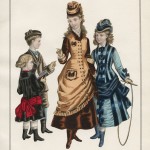
The passengers were mostly women and children, wearing constrictive clothing of the era, long skirts, boots and other Victorian attire, it is unlikely that many of them could swim. It has been reported that eyewitnesses said the Princess Alice took around 4 minutes to sink, and not much longer for hundreds to die. Apparently 20 minutes after the collision there were no survivors remaining in the water. Of the estimated 700-800 people on-board, only between 69 and 170 people were rescued, over 650 died. The site was now a floating mass of shawls, hats, cloaks, umbrellas, and toys. The tragic news would start to spread across London as anxious relatives, probably including William, were waiting at Swan Pier for their loved ones. As bodies were being retrieved from the Thames rumours were reaching the relatives who then desperately went to search for surviviors.

The terrible job of identifying the dead would begin. Early newspaper reports show that Emma was identified by William, but initially Rose was still missing. Emma had drowned she was 58 years old.
Later reports show that Rose’s body was identified by her brother in law, John Gardner.
“James Gardner 2 Cottage Lane City road – I identify Rose Frith, my sister in law aged 21. She was with her mother, who was drowned, but whose body has been found.”
It was unfortunate that some bodies, mostly women, were never identified and they were dramatically buried on “Burial Monday” in Woolwich.
To date I have not been able to find the final resting place of Emma & Rose, however I have visited the Woolwich Old Cemetery, where 120 victims were buried in a mass grave. A memorial cross was erected to mark the spot, “paid for by national sixpenny subscription to which more than 23,000 persons contributed”.
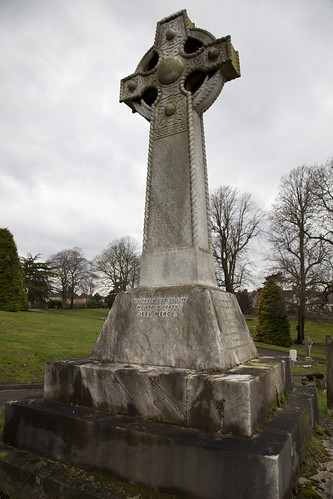


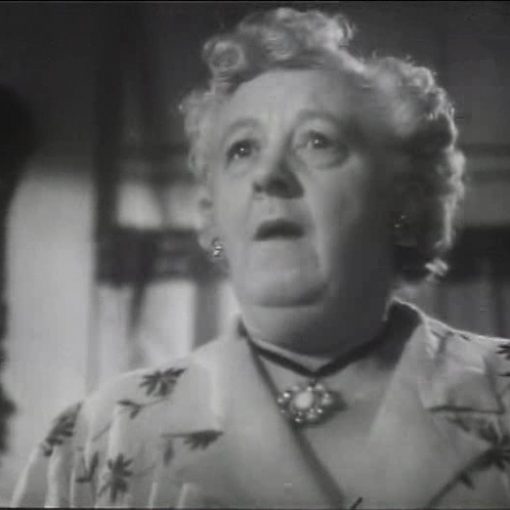
2 thoughts on “Emma’s Story”
It may be of interest that the touring 1878 Australian (self-funding) cricket team donated a considerable sum to the Princess Alice fund before they sailed for home shortly afterwards.
That is interesting